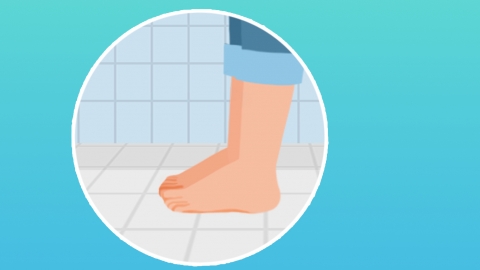What causes poor venous return and ankle edema?
Under normal circumstances, the main causes of poor venous return and ankle edema include prolonged sitting or standing, pregnancy, varicose veins in the lower limbs, heart failure, chronic kidney disease, etc. If discomfort symptoms occur, it is recommended to seek timely medical evaluation and treatment at a正规 hospital. Specific analysis is as follows:
1. Prolonged Sitting or Standing
Maintaining the same posture for extended periods makes it difficult for venous blood in the lower limbs to return due to gravity, leading to blood pooling and ankle edema. It is advisable to get up and move regularly, perform toe raises and leg lifts, elevate the legs during rest, and wear loose clothing to avoid compressing the legs.

2. Pregnancy
During pregnancy, the enlarging uterus compresses the inferior vena cava, hindering venous return from the lower limbs. At the same time, increased blood volume can trigger edema. Limit salt intake, take appropriate walks to improve circulation, rest in a lateral position with legs elevated, and wear comfortable flat shoes.
3. Varicose Veins in the Lower Limbs
Damaged venous valve function leads to blood reflux and stagnation, causing vein dilation and ankle swelling, often accompanied by prominent blue veins on the legs. Medications such as micronized purified flavonoid fraction (MPFF) tablets, diosmin tablets, or calcium dobesilate capsules may be taken under medical guidance. Wearing medical compression stockings and avoiding prolonged standing or sitting are also recommended.
4. Heart Failure
Reduced cardiac pumping function impedes venous return, resulting in blood accumulation in peripheral vessels and ankle edema, often accompanied by chest tightness and shortness of breath. Under medical supervision, medications such as furosemide tablets, spironolactone tablets, or digoxin tablets may be prescribed. Fluid and salt intake should be restricted, and strenuous activities avoided.
5. Chronic Kidney Disease
Impaired kidney filtration leads to retention of water and salt in the body, causing ankle edema, often accompanied by increased foam in urine. Under medical guidance, medications such as hydrochlorothiazide tablets, valsartan capsules, or Bailing capsules may be used. A low-salt, low-fat diet is recommended, along with regular monitoring of kidney function.
In daily life, avoid prolonged sitting or standing; move the lower limbs regularly; control salt intake to reduce fluid retention; engage in moderate exercise to strengthen lower limb muscles and promote circulation; undergo regular physical check-ups to detect heart, lung, or kidney conditions early; and choose appropriate footwear and socks to avoid compressing leg blood vessels.








